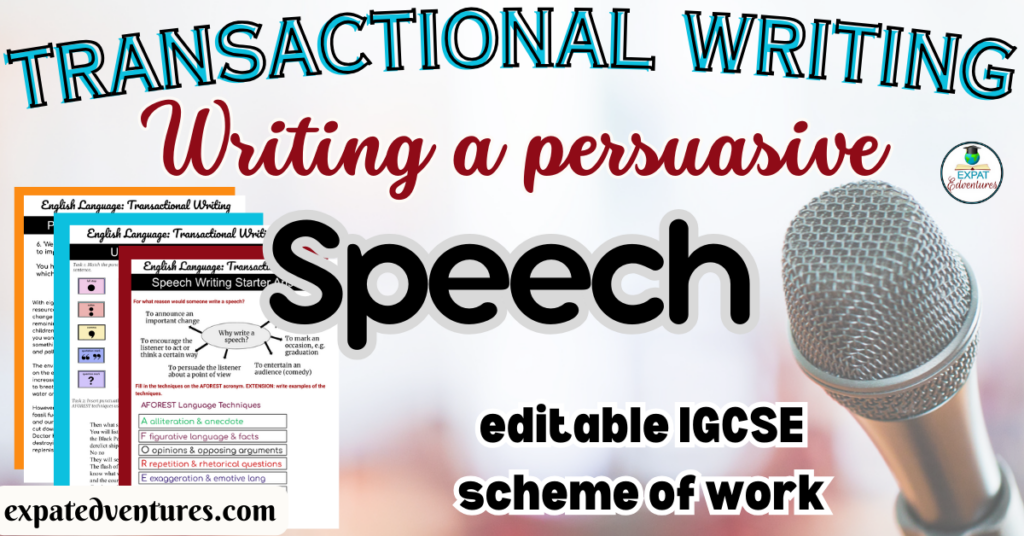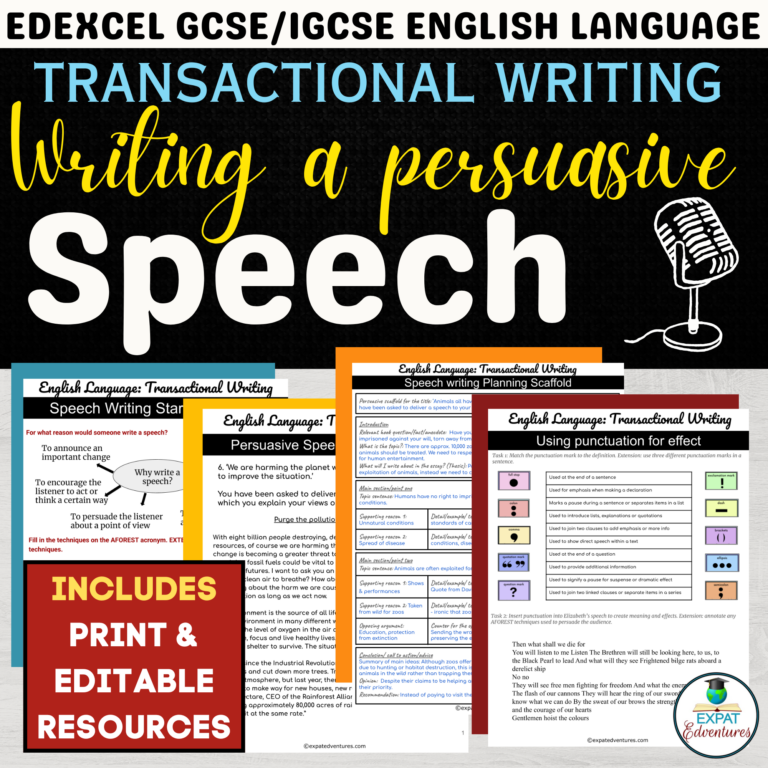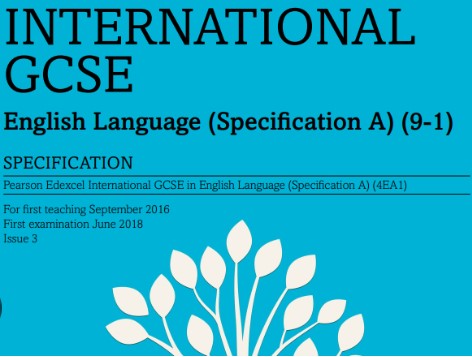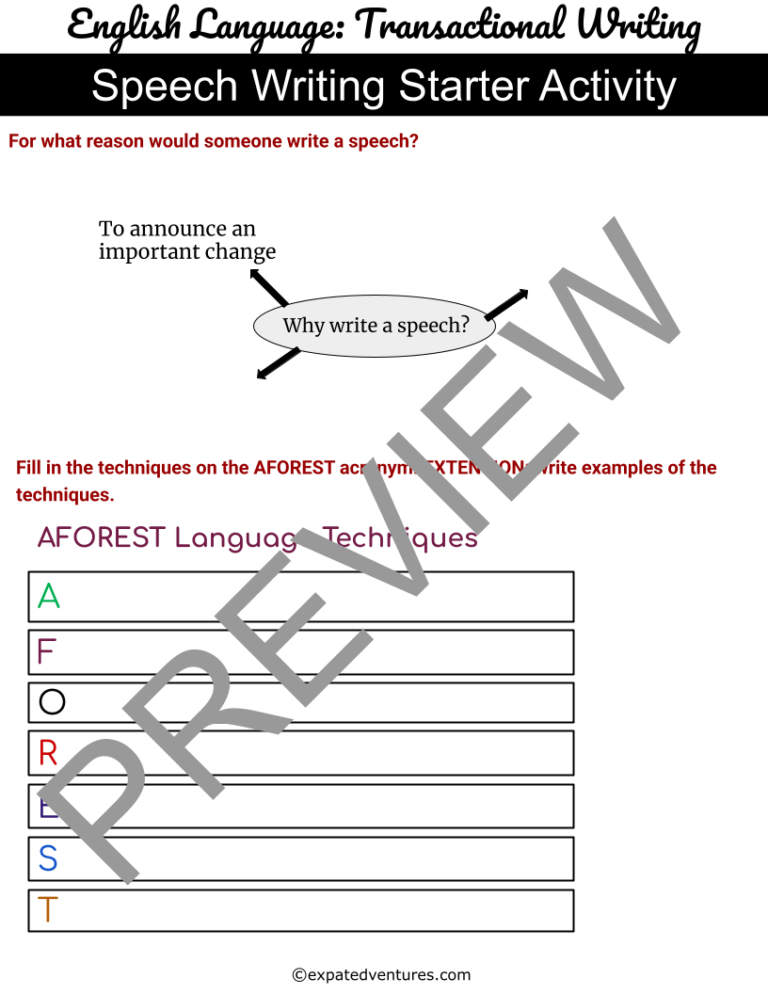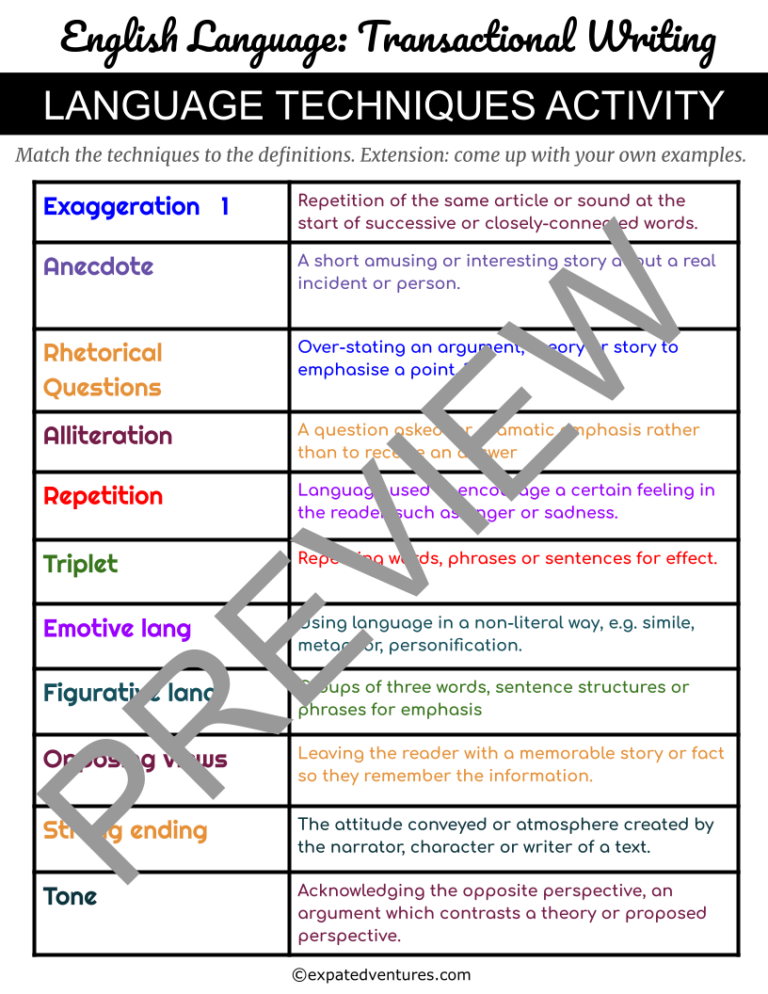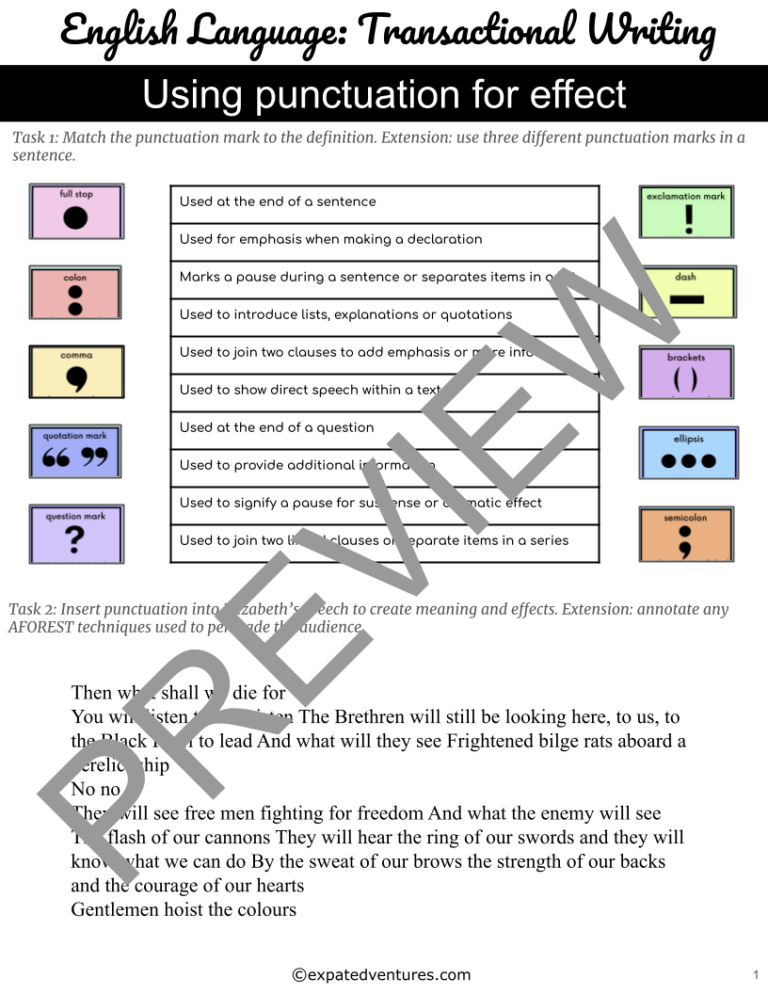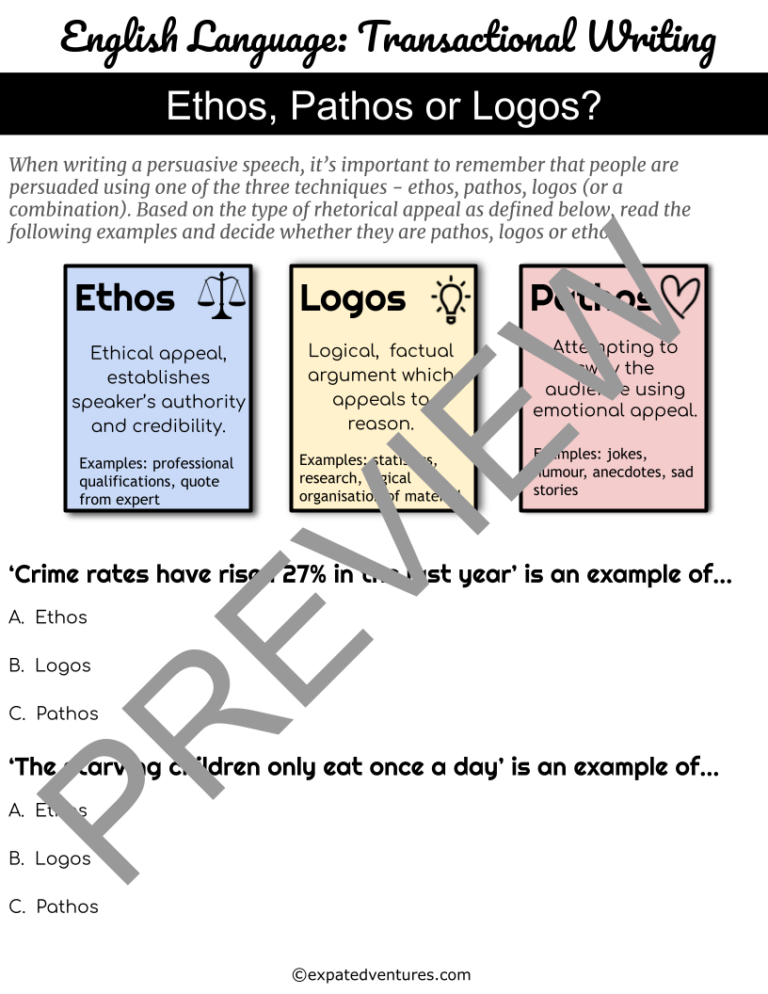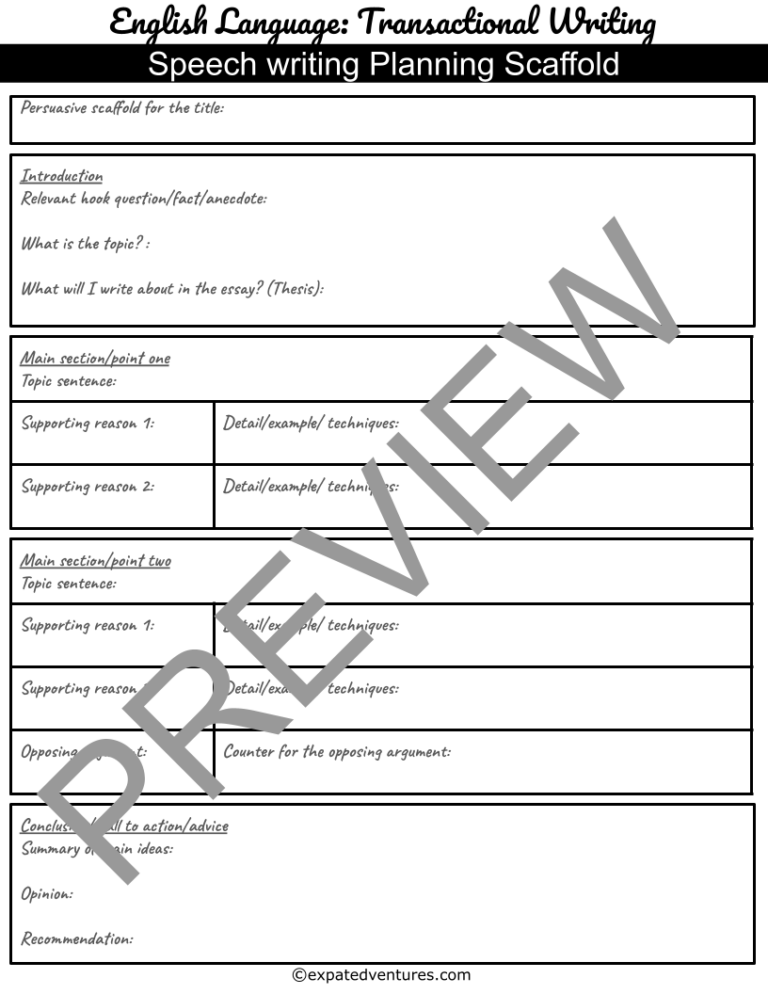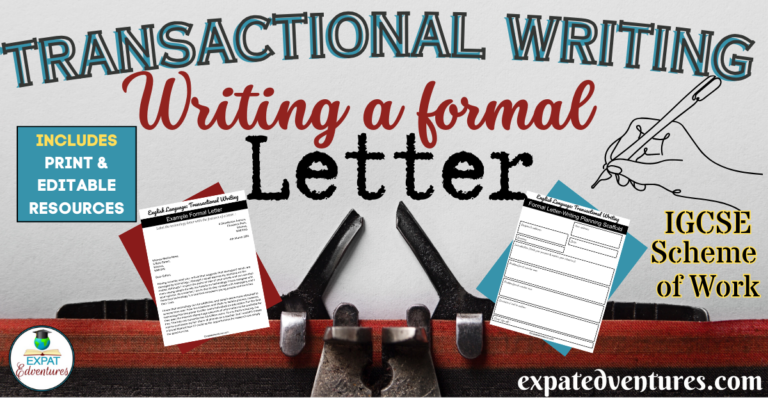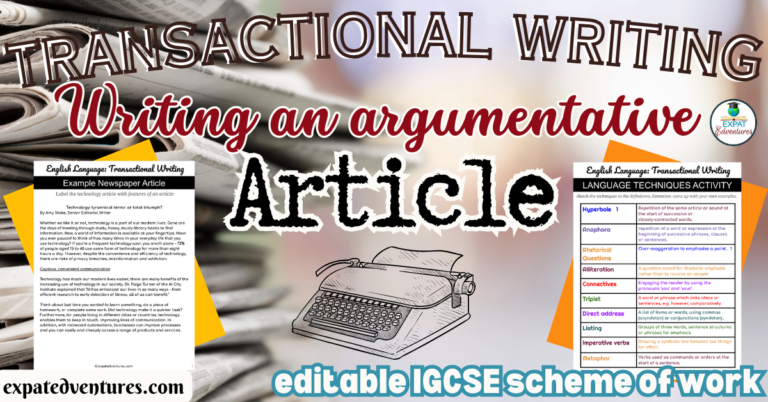GCSE speech writing is currently taught on the Edexcel GCSE/IGCSE English Language Paper 1 curriculum. Persuasive speech writing is one of the text-types which comes up on Section B of the English Language Paper 1. Although some students find structuring a persuasive speech challenging, it’s useful to develop the skill of using language to persuade and assert yourself. I find that speech writing is the most enjoyable text-type to teach. Plus, students tend to enjoy writing persuasively.
The Pearson Edexcel English Language exam could ask a range of questions which require GCSE speech writing skills. Therefore, it’s imperative that students have a variety of language and structure conventions in their exam toolkits. This GCSE speech writing unit of resources ensures students are prepared for all English Language Section B persuasive speech writing eventualities.
GCSE Speech Writing Scheme of Work
I’ve created a scheme of work for busy teachers to take you step-by-step through teaching persuasive speech-writing. It contains everything from an engaging, thought-provoking starter to identifying language and structure techniques. Additionally, it comprises activities from analysing and annotating an example speech to practising an Edexcel GCSE past paper question on the text.
This GCSE speech writing resource contains editable Google slides, a model speech, a scaffold and a mark scheme. All activities are ready to download and print in PDF form or there are links for you to personalise them if you wish.
Edexcel IGCSE English Language Exam Paper 1
The 2 hour 15 minutes Edexcel IGCSE English Language Paper 1 exam is split into Section A and Section B. Section A is the reading assessment and candidates are presented with one of the 10 non-fiction Anthology texts and one thematically linked unseen text. The texts are between 1.5 and 2.5 pages long. They have 5 questions to answer in Section A:
- A 2 -mark retrieval question. Lifting and copying two brief and relevant quotes from the unseen text is the skill being assessed in this question.
- A 4-mark summary question. Candidates are asked to paraphrase a certain event, character or theme from the unseen text.
- A 5-mark ‘SQUID’ question (it’s an acronym not a slimy sea creature!). Students identify five distinct details from the unseen text and use quotations to support their points.
- A 12-mark extended analytical response on the seen text.
- A 22-mark comparative essay, usually based on the writers’ perspectives, experiences or feelings.
Section B is a writing assessment. Candidates choose between two options, which are normally loosely based on the Section A texts. The text types include a letter, article, speech or leaflet. Both Section A and Section B are equally weighted, worth 45 marks each. Students are assessed on their ability to adapt their tone, style and content to the question and intended reader. Additionally, grammar, spelling and punctuation are on the Section B writing rubric.
GCSE Speech Writing Tasks
To start off, I encourage students to consider the reasons for writing a speech. This generates ideas about purpose. I ask students to brainstorm ideas for a few minutes, giving them an example to start them off. They can do this in pairs or individually.
After taking feedback, I ask students to match definitions to speech features using the AFOREST acronym. This gives them specific techniques they can apply to their writing. In turn, this enables them to demonstrate an understanding of the distinctions between the speech text-types and others that may come up on the exam.
Persuasive Language Techniques in GCSE Writing
When the exam question calls for a speech, I like students to identify the techniques in an example speech. They receive credit for varying their style and structure depending on the question. Using the format of a speech helps to explicitly show the examiner that they recognise and are responding to the specific question, rather than providing a generic answer.
I find the best way to do this is share an example of a real speech. I like to use Winston Churchill’s ‘Blood, toil, Tears and Sweat’ speech as it’s short, but packed full of persuasive techniques. The full example speech is available as an editable PDF in this GCSE speech writing unit. Also, there are annotations and notes available in the Google slides.
Once students have annotated the AFOREST techniques, I share the annotations with them in the slides. Most students can identify some of the features of speech writing. But the tricky part comes in structuring a cohesive, engaging argument whilst incorporating relevant language techniques.
Using punctuation for meaning
Using punctuation for effect will help students achieve higher marks for this question. I start with a humorous quote to engage students in the topic. Then, I explain that the top band on the transactional writing rubric moves beyond using punctuation accurately. That is, the use of punctuation to enable the reader to understand the response. To get the top marks, students must start using a variety of punctuation for effects, such as to create suspense or to add a dramatic pause.
To that end, the first activity I give students (included in the GCSE speech writing resource pack) is a quick recap of the types of punctuation mark and what they are used for. After that, I play students a short video of a speech (I use one from Pirates of the Caribbean). Then students add in the correct punctuation to create effects, before I share the punctuated version. The editable worksheets and Google slides form part of the GCSE speech writing unit. It’s worth noting that not all the punctuation marks are exact – some students will choose a dash where others will use a colon, for example.
As an extension, students could annotate the speech for AFOREST techniques, and I have also included annotated notes in the editable Google slides, part of the GCSE speech writing pack.
Rhetorical Appeal in Transactional Writing
Before students write a speech for themselves, I also like to ensure that they have a good working knowledge of ethos, pathos and logos so that they can appeal to the reader using different methods.
After reviewing the meaning of ethos, pathos and logos and some examples, I like to do a short formative assessment. I have included a low stakes true or false quiz on how to use ethos, pathos and logos in speech writing with the resource. You can do this either as a class on the whiteboard or print for students to complete on paper.
GCSE English Speech Writing Past Paper Questions
Now that you have covered the skills involved with writing a speech, it’s time to introduce a task. I have included a speech writing question based on past paper questions. Sometimes questions are like the one included in this scheme of work, whereby students are asked to provide their views on a statement. Other years, the exam asks for students to persuade a certain audience on a topic. However, most of the time, students are given a statement and asked to write a speech expressing their views on the topic.
For transactional writing, there are 45 marks available on the mark scheme. They are split between A04 (content, style and quality of communication) and A05 (spelling, grammar, punctuation and sentence structure). After sharing the question with students, I go through the rubric with them. I have included a more student-friendly rubric in the speech writing scheme of work.
If it’s the first-time students have attempted a GCSE question like this, they may need support in the form of scaffolding. The speech writing resource contains a planning scaffold along with notes, questions, an example completed scaffold, and ideas to help students formulate cohesive ideas.
Transactional Writing Speech Example
Next, students will attempt to answer the question. Following this, I like to share a full mark model example so that students can identify their strengths and areas to improve. I find that students will often ask me, “if my mark is X, how do I improve it?” It benefits them to see exactly how to do that by analysing a full mark example answer.
GCSE English Language Writing Checklist
You will find a useful checklist for students to use whilst writing their responses in the speech writing scheme of work. It’s a helpful tool to guide their revision also.
To sum up, some of the best techniques for teaching students how to write a persuasive speech include:
- Hooking students with an intriguing starter activity.
- Demonstrating features of a speech and persuasive language techniques in an example speech.
- Quizzing students for a quick AFL strategy to assess whether they are understanding the material.
- Practising a past paper GCSE question, using scaffolds and models to help students formulate cohesive and relevant ideas.
- Comparing their responses to a model to constantly strive for improvement.
Good luck teaching GCSE speech writing – it’s always interesting to hear students’ opinions on the topics raised in the transactional writing questions. I love to read their perspectives and ideas. Comment below if you can add any useful teaching and learning techniques for this text.
If you enjoyed this speech about teaching GCSE speech writing, you might also find value in my Edexcel IGCSE Paper 2 guides and resources for ‘Out, out-‘ and ‘Disabled’. There are also Edexcel IGCSE English Language Paper 1 guides and schemes of work for many of the set texts, including The Danger of a Single Story and A Journey into Bhutan. Moreover, you might want to use the complete GCSE letter writing unit and the comprehensive GCSE article writing unit. Thank you for reading and follow my store for more as resources are constantly being added.

